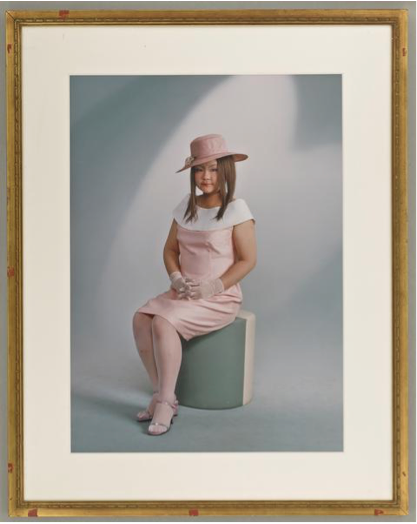The Younger Generation: Contemporary Japanese Photography

The Younger Generation: Contemporary Japanese Photography
J. Paul Getty Museum, Los Angeles, CA
October 26, 2015 – February 21, 2016
In the 1990s, critic Iizawa Kōtarō coined the phrase “girl photography” to refer to the work of young Japanese photographers who happened to be women. The Younger Generation: Contemporary Japanese Photography, on view at the J. Paul Getty Museum, in Los Angeles from October 26, 2015 – February 21, 2016 is curator Amanda Maddox’s challenge to this sexist, homogenizing label. The exhibition presents the work of five women photographers – Kawauchi Rinko, Onodera Yuki, Otsuka Chino, Sawada Tomoko, and Shiga Lieko – demonstrating how the diversity and range in their work counters “the idea that ‘girl photography’ could define a generation of practitioners.”[1] Despite Maddox’s stated aims and the strength of the work in the exhibition, the show lacks sufficient context to truly explain and then dispel the concept of “girl photography.” Further, it does not embed “girl photography” within a larger history of Japanese photography or of sexism in contemporary art. In short, it fails to establish why the problematic label “girl photography” must be addressed rather than dismissed or ignored.
The Younger Generation occupies two small rooms at the back of the Getty’s West Pavilion. The first room of the exhibition pairs two surrealist series: Onodera Yuki’s Portraits of Second-hand Clothes (1994-1997) and Shiga Lieko’s Rasen Kaigan (2008-2012). The garments in Onodera’s images seem playful; they dance in the breeze and invite viewers to consider them as objects with their own histories and character. Lieko’s odd, fantastical subjects (a man with an uprooted tree protruding from his chest, a couple wading through a purple swamp) are compelling responses to the impacts of the 2011 earthquake, tsunami, and nuclear plant accident in the Tōhoku region, yet the exhibition provides little context for interpreting the images. The wall text states that “the series . . . showcases the chaos and mysteriousness of this strange place associated with mythology, natural disaster, and trauma,” but these generalizations do not help viewers understand these associations or how Lieko employs them.[2]
Sawada Tomoko’s OMIAI♡ (2001), presented through 30 images hung salon-style on a single wall, is the clear focal point of the second gallery. This installation recalls the sample image wall at a portrait studio, appropriate since OMIAI means “arranged marriage meeting” and refers to the tradition of studio portraits used in matchmaking.[3] Posing under bright studio lights that cast a heart-shaped shadow in the background, Sawada alters her hair, make-up clothing, pose and expression to present herself as different characters. Creating a balance between repetition and variety throughout the images, Sawada imbues the series with humor and playfulness.

Kawauchi Rinko’s Cui Cui (1992-2005) and Otsuka Chino’s Imagine Finding Me (1998-2012) feature small-format, contemplative works and extend across two walls on either side of Sawada’s OMIAI♡ series. Through Kawauchi’s lens, a bowl of strawberries topped with sugar becomes a meditation on textures. But images of the death of the photographer’s grandfather and the birth of her nephew are interspersed with such mundane subject matter, aligning the two types of images as moments within the rhythms of life. Otsuka’s photographs from Imagine Finding Me are equally quiet, poetic images that suggest narrative fragments. In her imaginative self-portraits, Otsuka inserts her current likeness into snapshots of herself as a child. Sometimes the adult Otsuka is an unobtrusive passerby. In other instances she is beside her younger self, recast as a friend, mother, or older sister. As with Sawada’s OMIAI♡, there is a certain pleasure in being able to read how Otsuka’s images have been manipulated. There’s a subtle, wry humor in Imagine Finding Me, as Otsuka stages these moments in which her older and younger selves “meet” across time.
The goal of the exhibition is to challenge the concept of “girl photography,” but the exhibition does not truly engage with the specific ways that this label could be interpreted or how particular works in this exhibition defy such limiting categorization. Maddox implies in her introductory panel that “girl photography” is an obsolete concept, but she does not fully deconstruct it through the exhibition. Once introduced, “girl photography” is not mentioned again. Brief additions to the wall text for each series would have developed the argument for how the photographs in the exhibition demonstrate the limits of this label. Because the exhibition assembles compelling works that can be valued for their conceptual and technical strength rather than defined primarily by the artists’ gender, The Younger Generation chips away at “girl photography,” but does not quite succeed in dismissing it.
Shannon M. Lieberman
Exhibition Website: http://www.getty.edu/art/exhibitions/younger_gen/
Recommended Listening: Audio of the panel discussion “A Reaction Against ‘Girl Photography.’” Getty Center, LA, October 15, 2015.
Endnotes:
[1] “The Younger Generation: Contemporary Japanese Photography,” published online 2015, The J. Paul Getty Museum, Los Angeles, http://www.getty.edu/art/exhibitions/youngergen.
[2] “The Younger Generation: Contemporary Japanese Photography,” published online 2015, The J. Paul Getty Museum, Los Angeles, http://www.getty.edu/art/exhibitions/youngergen.
[3] Tomoko Sawada, OMIAI♡ (Kyoto: Seigensha Art Publishing, Inc., 2005), np.